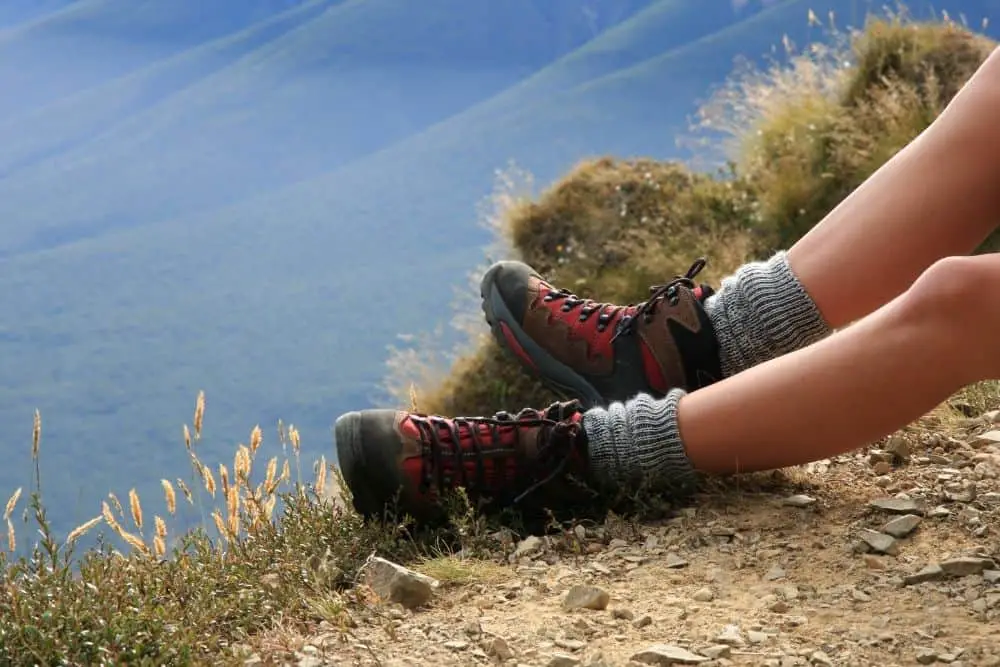If you are going hiking for the first time and just got your hiking footwear, you should know that new boots can be a bit uncomfortable at first. Hiking boots can be stiff for different reasons, especially when they are new.
The soles and the uppers will be stiff, and you may not be able to flex your feet in your hiking boots. This is why you must get hiking boots that fit your feet properly. Even then, the hiking boots would still be stiff since they are new.
Therefore, you may need to make them softer for you to enjoy them when on the trails. To break in hiking boots, people try different methods, like using a boot stretcher, trees, heat, conditioners, and so much more.
Sometimes, these methods are quick, and other times, you will have to try them a couple more times for your hiking boots to break in. Sure, people break their hiking boots when they are too stiff, but should you even bother at all?
Of course, you can do it without breaking in your hiking boots, but it may not be the best option. Before you get confused about what you should do concerning breaking in your boots, you should know the implications.
This article will state the benefits and drawbacks of breaking in your hiking boots.
Let’s get into it.
Contents
Do I Need To Break In Hiking Boots?
Yes, you need to break in your hiking boots in most cases. When hiking boots are still new, the first few times you wear them, they will probably feel stiff around your feet and ankles.
Breaking in hiking boots is a great solution for your long treks through many difficult terrains and environments. Besides making you more comfortable, breaking in hiking boots can make them softer, more flexible to be able to deal with the obstacles of external forces.
Before breaking in hiking boots, you may experience less foot movement, and hiking may not be as pleasant as you thought it would be. But, after breaking them in, they should feel different around your feet, unless, of course, you’ve got hiking boots that are just too small for your feet.
If your hiking boots are bigger than your feet, you don’t need to break them in. Instead, you need to return them to the store and get the appropriate size.
The same applies if your hiking boots are extremely small. With that said, why should you break in your hiking boots, and why not?
Reasons
First, let’s check out what you can benefit from a pair of broken-in hiking boots!
1. Comfort
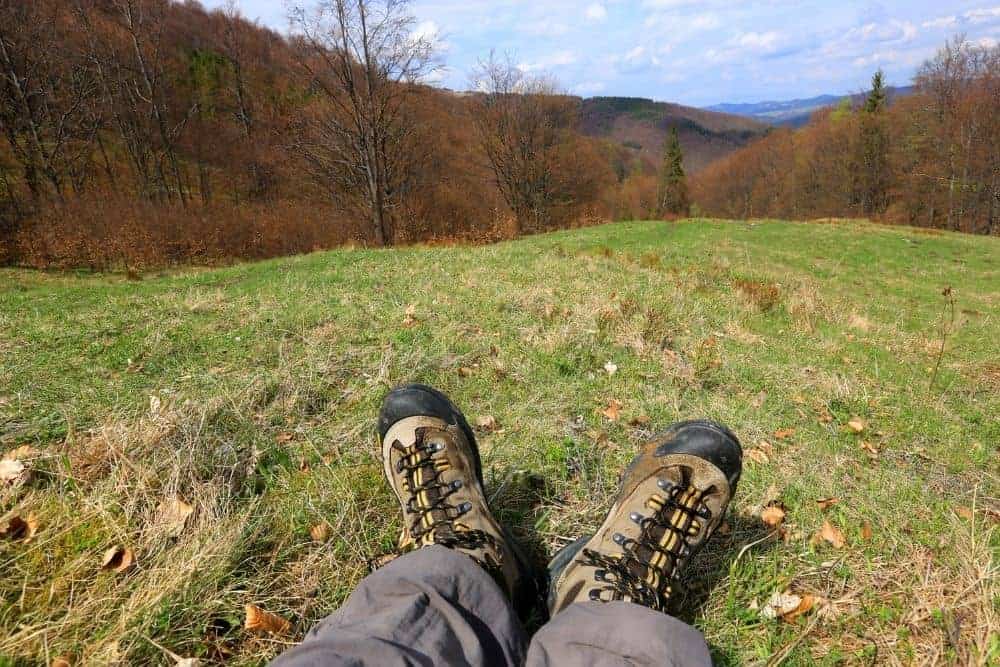
When you buy shoes and wear them for the first time, they will not feel like the ones you have worn for a while. Your toes may hurt after wearing them for a while and may squeeze against the inside of the shoes.
Sometimes, it could be the top of your feet or your heel or just general tightness. All these combined can make you feel comfortable on the trail.
You may not feel it much if you are on a short hike; however, managing that for a full day or multiple days can be super uncomfortable. Of course, taking breaks at intervals will help lessen the pain; however, that would slow you down a bit.
Not only that, after the hike is over, you may have to nurse the pain for a while before it finally dissipates.
Breaking in your hiking boots can prevent all of that from happening.
You can wear your hiking boots over a boot stretcher or tree overnight a couple of times before hiking, and you can enjoy comfort on the trail. When your hiking boots mold around your feet properly, you don’t have to worry about them being too tight around your feet.
Besides, after the break-in process, hiking boots are also softer and more flexible, which helps a lot for your comfort through rocky roads.
Once your hiking boots are broken in, you can enjoy hiking in comfort for as long as your boots are good.
2. Prevent blisters
Hot spots are real and, worse yet, they could turn into blisters. In addition, stiff or tight hiking boots can result in a lot of friction and friction blisters.
Getting blisters on the trail is painful and uncomfortable, especially if you are not done hiking and you still have hours till your feet can breathe again. Not only that, after you are done, you still have to take care of the blisters till they heal.
That also means you need to refrain from wearing your boots or going on hikes until the blisters heal. Plus, you also put your feet at risk of other foot problems on the trail.
This is why your feet need enough room in your hiking boots to flex and breathe, reducing hot spots and friction. Therefore, you can try any breaking-in method, like using heat or stuffing your hiking boots, and your boots will be freer around your feet.
Wear your hiking boots around the house or on a short hike, wear comfortable and thick socks, and lace your boots correctly when on the trail. All these things will help break in your boots without blisters.
So, you need to protect your feet from blisters and other foot conditions, which is why you need to break in your hiking boots.
3. It is easy
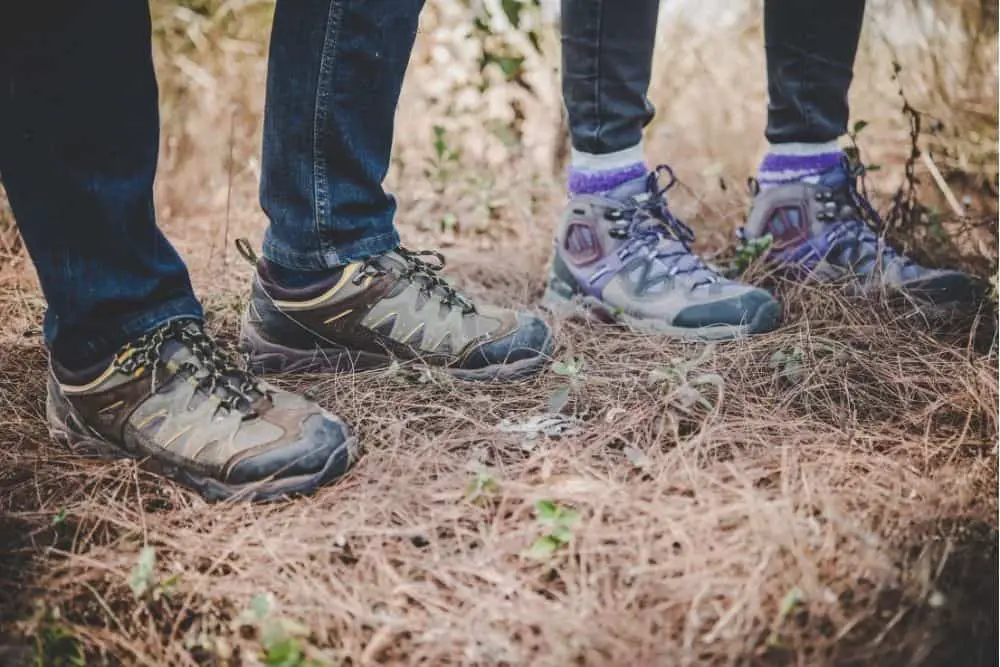
Another reason you need to break your hiking boots in is that doing that is easier than enduring the pain or discomfort of stiff hiking boots.
Moreover, breaking your hiking boots in is relatively easy and does not require too much effort, depending on the method you want to employ.
If you choose to wear your hiking boots to break them in, that can be uncomfortable. However, it is easy compared to other methods and does not require much effort on your part.
Since breaking your hiking boots is somewhat easy, you should do that to enjoy hiking every time you are on the trail.
Some risks and difficulties
What could be the risks pf breaking in your hiking boots? Let’s check out!
1. Risk of overstretching
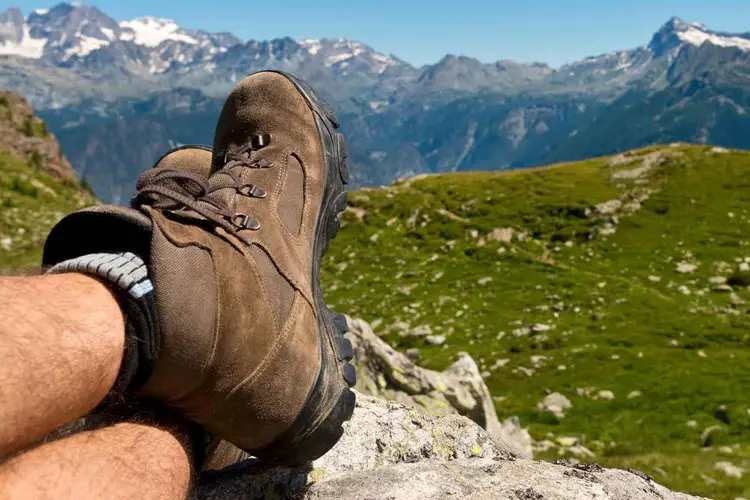
One of the drawbacks of breaking in your hiking boots is the risk of overstretching them. Sometimes, people get impatient with breaking their hiking boots in and go the extra mile, intentionally and unintentionally.
When you browse online on ways to break in your hiking boots, you may see a lot of quick methods that people will suggest. Of course, some of them can do that quickly, but it can pose the risk of overstretching your hiking boots.
And yes, you will end up with softer hiking boots, but in the end, they may become too soft that they probably will not mold around your feet as they should. Also, you don’t want to end up with split hiking boots instead of broken-in ones.
That is why you need to try safer breaking in your hiking boots. For example, you can try stuffing your hiking boots with a boot tree or newspapers or soften them with heat, oil, or conditioner.
After doing that a few times, you can have your soft hiking boots in no time. Therefore, you should not try to overdo breaking in your hiking boots.
2. Can affect boot durability
Breaking in your hiking boots can affect their durability. You risk losing the support hiking boots provide when you break in your boots.
However, this is most common with low-quality hiking boots. When the boots become too soft, it becomes a problem. And once your hiking boots cannot provide much support, they don’t feel the same.
In addition, if your hiking boots are low quality, they may not last as long as they should if you overstretch them.
3. It can be expensive and time-consuming
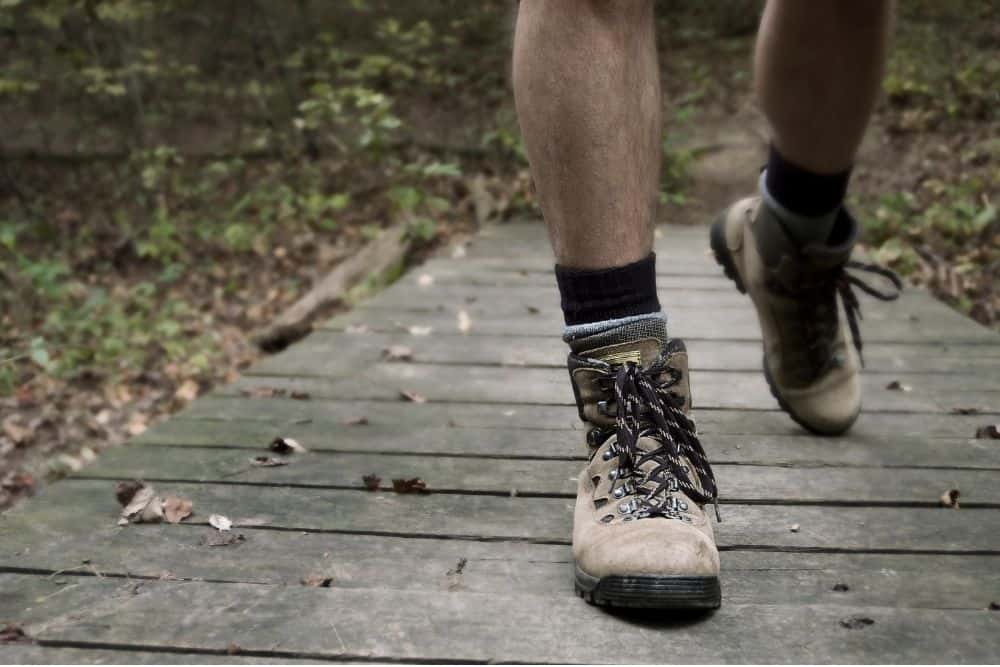
Another drawback of breaking in your hiking boots is that it can be expensive and time-consuming, but of course, this depends on the method you decide to go for.
For example, if you choose to stretch hiking boots using a boot tree or stretcher, you need to buy them if you don’t have them in your home.
Likewise, hiring a professional for the job would cost a few dollars. And you probably didn’t bargain to spend more money on your hiking boots after buying them.
In other cases, breaking in hiking boots can be time-consuming, especially if you actively take part in that process. For example, wearing them around the house is a lot of work, and you may not be able to distract yourself from the pain for too long.
Other times, when you have to heat them, then wear them, oil or condition them, that takes your time. However, you can have someone do that for you if you don’t have that much time to spare to break in your hiking boots.
What Happens If You Don’t Break In Hiking Boots?
Breaking in your hiking boots can take between 1 and 4 weeks, depending on how quickly they can break in. However, getting the proper hiking boots fitted is vital, so you won’t need to break in your boots.
Of course, there are some benefits and downsides to breaking in your hiking boots, but what happens if you decide not to?
1. It won’t flex
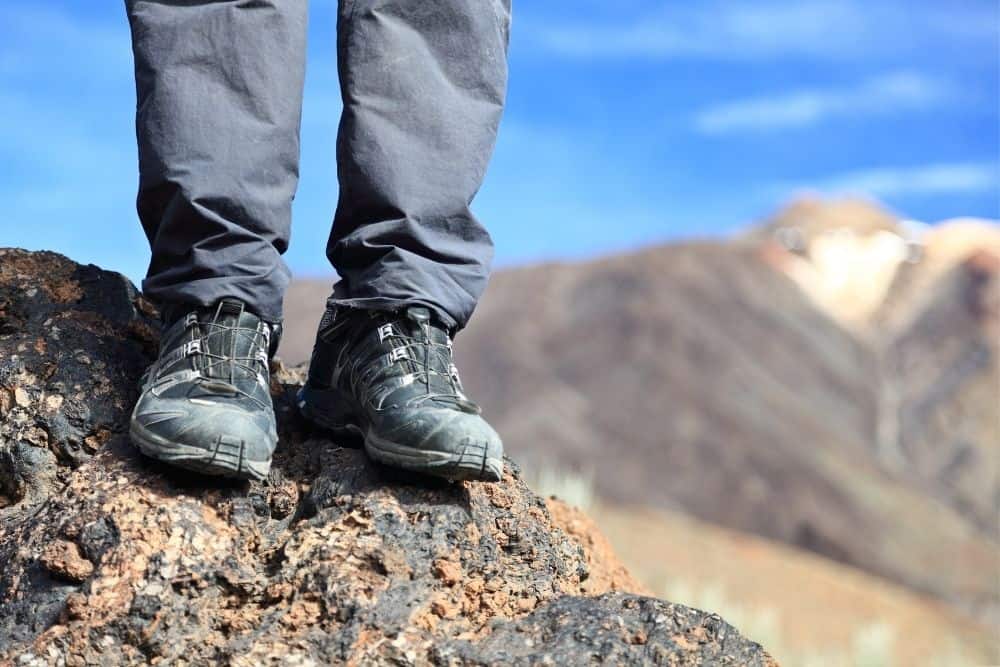
If you don’t break in your hiking boots, they won’t flex, including the soles and uppers. Unfortunately, this means that you will have to wear your stiff hiking boots for an extended period until they break in naturally after wearing them for a while.
Therefore, you will have to feel uncomfortable in your hiking boots for at least two to four weeks. But of course, if you don’t wear your hiking boots every day, it may just not work that way.
However, if you can deal with the pain and discomfort of wearing stiff hiking boots, you can choose not to break in your boots. But you should do that for happy feet and fun hikes.
2. More friction points
Not breaking in your hiking boots means more friction points in them. As a result, your feet will keep rubbing against the inside of your boots, making you uncomfortable as well as hurting your feet.
Friction can result in several hot spots on your feet, making them susceptible to blisters. However, you can avoid this by breaking in your hiking boots and reducing friction in your boots.
But you should note that there are other things that can cause friction in hiking boots apart from stiff ones. Then, you can avoid them and steer clear of blisters on the trail.
3. Feet are prone to soreness
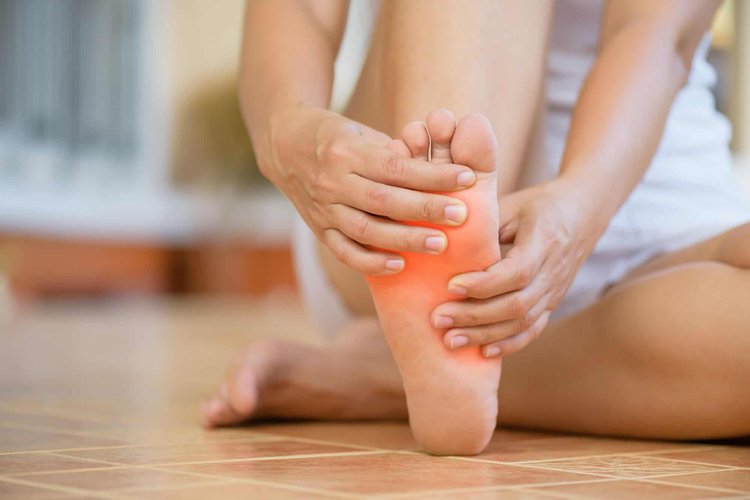
If you choose not to break your hiking boots in at the end of the first few hikes, you may feel some soreness in your feet. And that could be painful.
You will probably feel pain in your toes and heels from wearing your stiff hiking boots for too long. While it is good to let your boots break in naturally after wearing them often, it may not be the best option because your feet will experience some pain.
4. Your hiking boots last longer
Your hiking boots tend to last longer if you don’t break them in. This is more particular to less quality hiking boots or lightweight ones.
Since lightweight hiking boots are for shorter and less challenging hikes, they are not as strong and stiff as heavyweight, backpacking, or mountaineering hiking boots. Therefore, their materials are somewhat different.
So, in the case of breaking in your boots, you may overstretch them, and it could ruin the material or mess with the support they provide. Other times, some breaking-in methods can dry out the natural oil in the hiking boots, making them lose their shine sooner than they should.
If you refrain from breaking in your hiking boots, you may enjoy them for a long period, and they will possibly retain their good looks for as long as possible. But of course, if other unforeseen circumstances are absent.
If your hiking boots are good enough, then you don’t have to worry much about breathability.
Conclusion
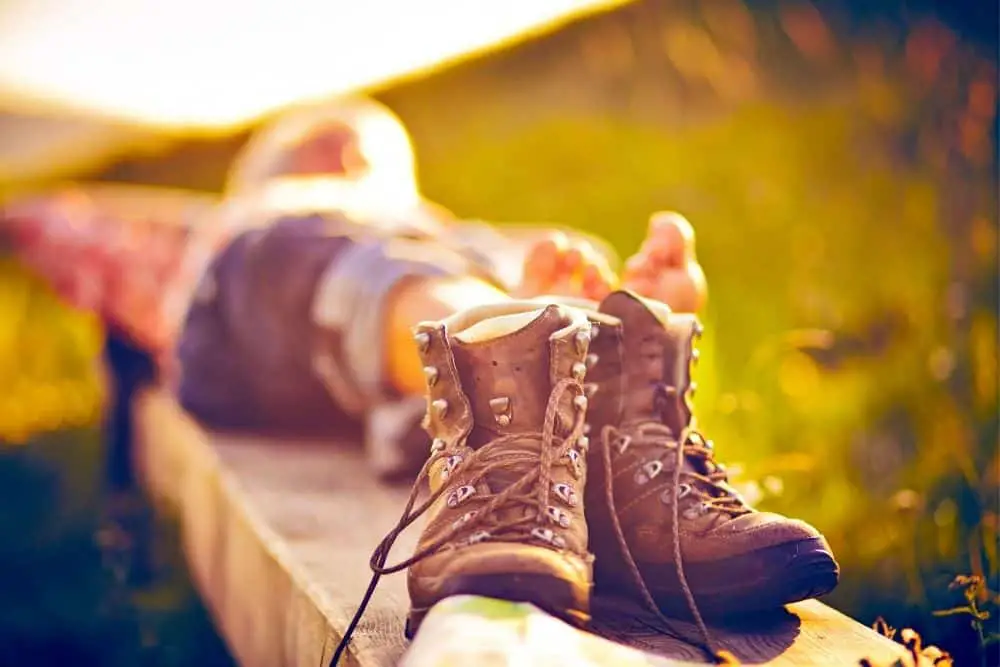
Wearing new or stiff hiking boots can be a whole lot of work. There is less room for your toes to flex around, the uppers feel rigid around your feet, and you are probably going to be in pain.
However, the next thing you can do is find a solution, for instance, breaking in your hiking boots. This means that you soften or relax the materials so that your feet can feel more comfortable in your boots.
You should know that getting hiking boots that fit perfectly is important. That way, if your hiking boots are stiff at first, you won’t have to do much to break them in.
In addition, you should be careful when breaking in your hiking boots so you don’t end up messing them up. So, ensure you’re using the right break in technique for your hiking boots.
Happy hiking!

